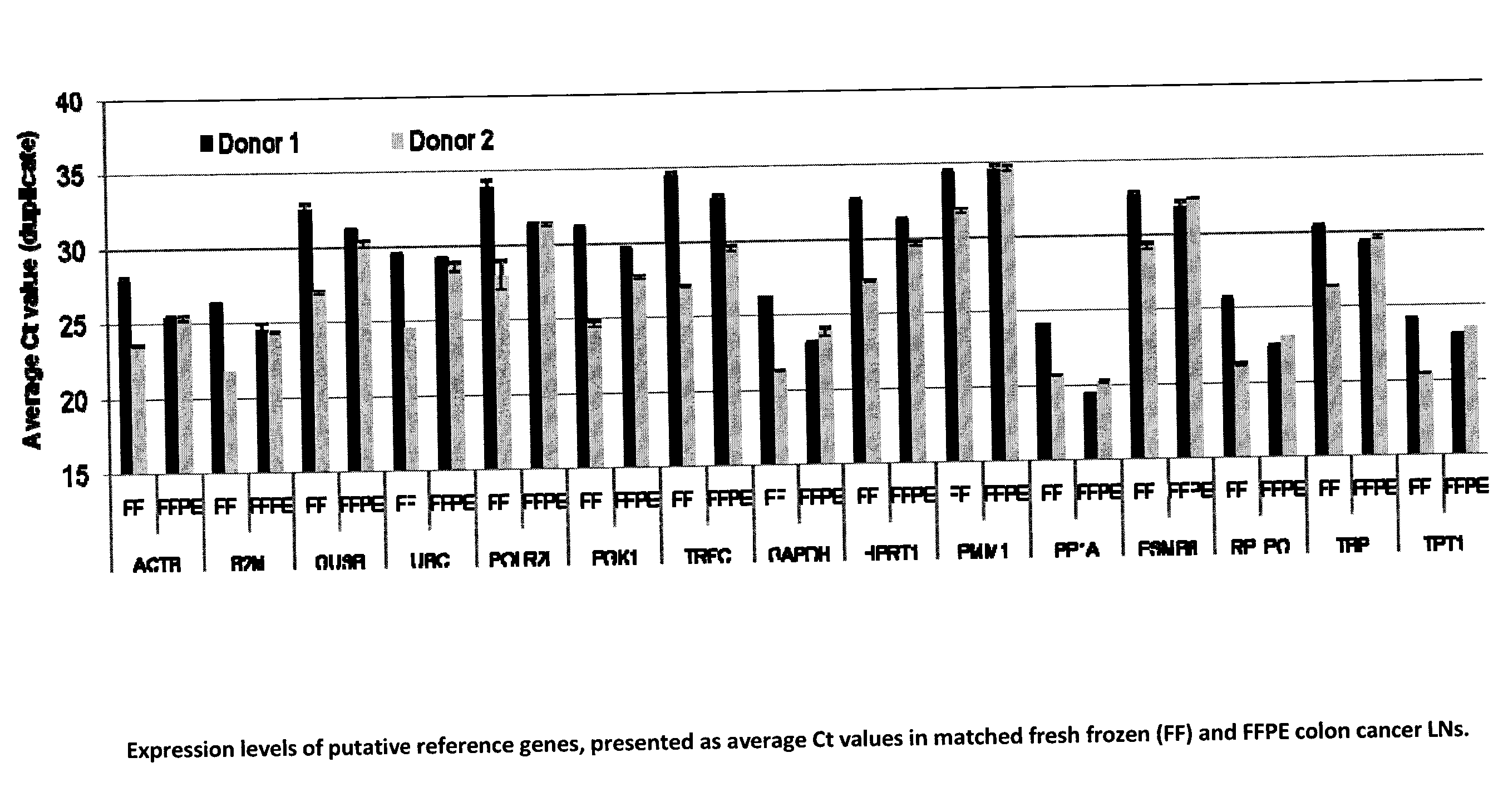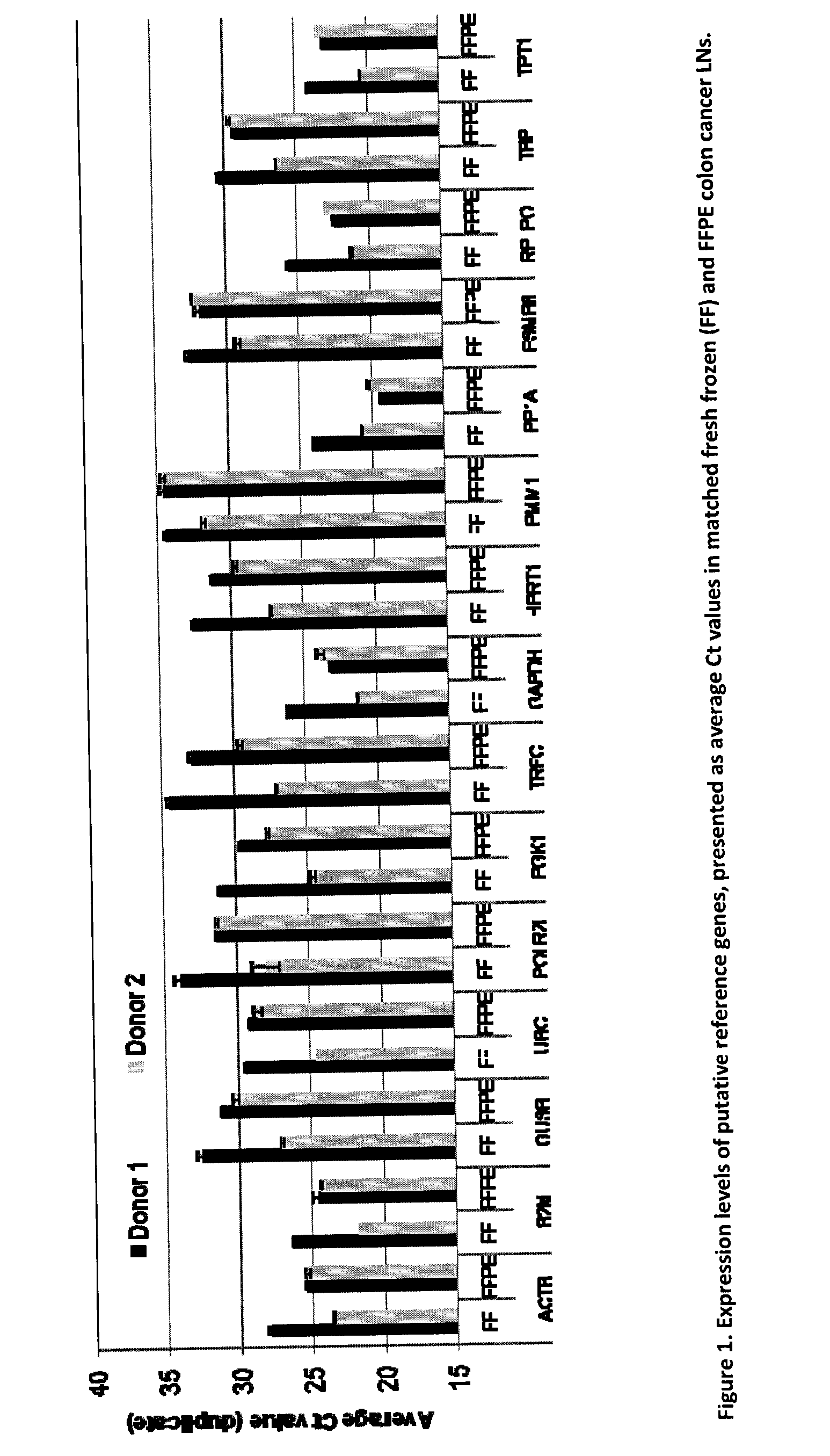Method for Detecting Metastasis of GI Cancer
a gi cancer and metastasis technology, applied in the field of detecting gi cancer metastasis, can solve the problems of unclear current treatment paradigm, difficult lymph node examination, inefficient treatment options for early stage colorectal cancer, etc., and achieve the effect of lower detection limits
- Summary
- Abstract
- Description
- Claims
- Application Information
AI Technical Summary
Benefits of technology
Problems solved by technology
Method used
Image
Examples
examples
[0189]Evaluation of stable endogenous reference genes in clinical samples is a prerequisite to precise normalization of relative gene expression using quantitative real-time reverse transcription-PCR. The use of a single so-called “universal” reference gene may lead to misinterpretation of the expression of the GCC gene. We set out to: a) identify a reference gene that is less abundant than ACTB in FPE LNs and confirm a stable expression not affected by the LN GCC status; b) if necessary, develop custom assays with amplicons compatible with FPE samples; and c) select the 5 most stable genes to further develop duplex assays.
1. Evaluation of Putative Reference Genes in Matched Frozen (FF) and Formalin-Fixed Paraffin-Embedded (FFPE) Pericolonic Lymph Nodes.
[0190]In real-time quantitative reverse transcription PCR (RT-qPCR), relative quantification using reference genes is a common approach but the determination of a suitable reference gene should be first assessed in the tissues under ...
PUM
| Property | Measurement | Unit |
|---|---|---|
| Fraction | aaaaa | aaaaa |
| Fraction | aaaaa | aaaaa |
| Fraction | aaaaa | aaaaa |
Abstract
Description
Claims
Application Information
 Login to View More
Login to View More - R&D
- Intellectual Property
- Life Sciences
- Materials
- Tech Scout
- Unparalleled Data Quality
- Higher Quality Content
- 60% Fewer Hallucinations
Browse by: Latest US Patents, China's latest patents, Technical Efficacy Thesaurus, Application Domain, Technology Topic, Popular Technical Reports.
© 2025 PatSnap. All rights reserved.Legal|Privacy policy|Modern Slavery Act Transparency Statement|Sitemap|About US| Contact US: help@patsnap.com



